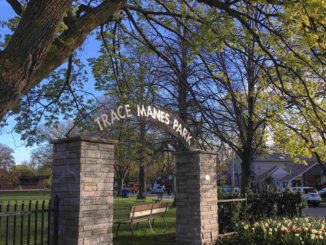
I have just published a book entitled Governing Toronto: Bringing back the city that worked.
In it I trace the growth and governance of the city from its creation in 1834 through its successful Metro years to why and how the decision was made to establish the present megacity.
Finally I urge the provincial government to initiate a long overdue review of the governance of Toronto aimed at a decentralization of decision making either by way of de-amalgamation, as has been successfully achieved by a number of Quebec cities, or alternatively by creating a more decentralized form of Toronto government using Montreal’s present borough system as a model.
The city of Montreal is made up of 19 boroughs with varying populations. When The Municipality of Metropolitan Toronto was created in 1954 it was made up of 13 municipalities with varying populations. Leaside was one of the 13.
Today our megacity is made up of 44 wards with populations intended to be roughly equal.
In 1967 the province of Ontario merged the Town of Leaside, which included the Thorncliffe community, with the Township of East York, which already included the Bennington Heights and Governor’s Bridge communities to create the Borough of East York.
Following total amalgamation in 1998 the province of Ontario divided the new Toronto into 22 wards with the same boundaries as the existing 22 federal ridings. Later these 22 wards were divided in half, resulting in the present 44 Toronto wards.
Since 1998 the population of Toronto has increased by almost a million people.
But that population increase has not occurred equally in each of the 44 wards. Because of this Toronto Council has recently retained consultants to conduct public hearings and make recommendations for boundary changes to achieve ward population equality. As advertised in the Toronto Star, 12 public meetings were held by the consultants during December and January. Did you attend one of these meetings?
At present Ward 23, formerly part of North York, has a population of 88,435 while Ward 29, adjoining the south of Leaside and formerly part of East York, has a population of only 44,935.
The city believes that the average population of each ward should now be approximately 61,000. Unless the method by which Toronto is governed is changed, as I have recommended in my book, it appears that the boundaries of Ward 29 will have to be changed.
The southern boundary of Ward 29 is Danforth Ave., the historic dividing line between East York and the old City of Toronto. It extends east to Coxwell Ave., the western boundary of Ward 31, which has a population of 54,032 and extends north from the Danforth and east to the Scarborough border of Victoria Park.
The northern boundary of both Wards 29 and 31 is essentially the Don Valley. However Ward 29 also includes the Leaside Bridge and Millwood Rd. up to the CPR overpass. If you shop at Loblaws on Redway Rd. you are shopping in Ward 29.
Prior to amalgamation the Borough of East York was made up of what are now Wards 29 and 31 together with Leaside, Thorncliffe, Bennington Heights and Governor’s Bridge. Leaside is now a part of Ward 26. Ward 26 which has a population of 67,367, is made up of four distinct communities, Leaside including Bennington Heights, Thorncliffe, Flemingdon Park and Wynford Heights. Both Flemingdon Park and Wynford Heights were part of North York prior to amalgamation.
While it’s impossible to forecast what boundary changes may be made to bring the populations of Ward 29 and Ward 31 up to the city’s desired average of 61,000, one possible solution would be to move the boundary between 29 and 31 west from Coxwell to Greenwood Ave. and then to add the remainder of Ward 29 to Leaside and Bennington Heights.
Leaside, Bennington Heights and Ward 29 are essentially single family home communities with similar problems and needs while Thorncliffe, Flemingdon Park and Wynford Heights are high-rise apartment communities with different kinds of problems and needs.
Of course a change of boundaries in one ward would require other ward boundary changes as well.
Only one thing is certain. If there is no change in the method by which Toronto is to be governed, there will have to be changes in the ward boundaries to bring all 44 wards closer to a more equal population. That will likely impact Leaside somehow.
Ideally however the province of Ontario will take my advice and initiate a long overdue review of the city’s governance leading to a more decentralized decision making process. Perhaps then Leaside will be one of a number of separate boroughs within Toronto.
From the book…
In 1913, another land developer, the York Land Company, the real estate arm of the Canadian Northern Railway, proposed to move its railway car repair shops from Winnipeg to Leaside (the repair shop building exists to this day as a Longo’s super market) and to lay out a planned residential community, if Toronto would annex the entire Leaside area. Again, the city civic department heads opposed the request saying that there was no benefit for the city but the York Land Company would make a fortune. A majority of the city Board of Control supported the idea, but when the vote was taken by city council as a whole on April 4, 1913, the proposal was defeated. The Toronto World called it a “jockeyed vote”. One month later on May 9. 1913, the Ontario Legislature incorporated the town of Leaside.
GOVERNING TORONTO: Bringing back the city that worked: The paperback version is available at Amazon.ca for $24.99 plus GST, or from Alan Redway, 416-421-5328, for $20 including GST.





